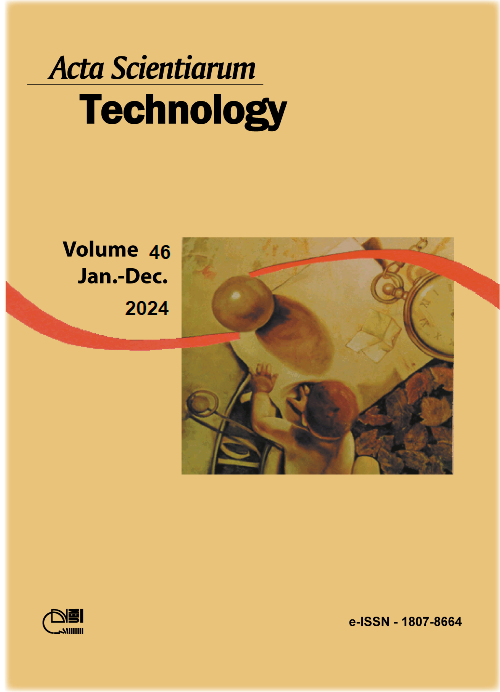Effect of Land Use/Land Cover Maps on CN Method: Case Study over Kahramanmaras
DOI:
https://doi.org/10.4025/actascitechnol.v46i1.66835Palavras-chave:
CN; GIS; LULC; remote sensing; rainfall-runoff.Resumo
The impact of Land Use/Land Cover (LULC) data obtained from various spatial resolution satellites on the distribution of the Curve Number (CN) across Kahramanmaras using the Soil Conservation Service (SCS)-CN technique was investigated in this research. This study aimed to examine the effect of LULC on runoff due to increasing urbanization in the last century and the conversion of forest areas to agricultural lands. CORINE data with a spatial resolution of 100 m, and Sentinel-2A data with spatial resolutions of 10, 20, and 60 m were utilized in the analysis. The results reveal that only the average CNs of the products are in close proximity, while there are significant discrepancies in the CN variation over the maps as the spatial resolution increases. The Sentinel-2A satellite findings revealed higher CN values compared to the CORINE dataset over the study area where three geographical regions, namely the Mediterranean, Eastern Anatolia, and Southeastern Anatolia. Additionally, the results show that an increase in urbanization triggers surface runoff potential and reduces it in agricultural and forest areas in the city. Thus, the updated and higher spatial resolution of LULC promises accurate flood forecasting and/or more scientific potential drought estimation as well as other hydrological applications.
Downloads
Downloads
Publicado
Como Citar
Edição
Seção
Licença
DECLARAÇíO DE ORIGINALIDADE E DIREITOS AUTORAIS
Declaro que o presente artigo é original, não tendo sido submetido í publicação em qualquer outro periódico nacional ou internacional, quer seja em parte ou em sua totalidade.
Os direitos autorais pertencem exclusivamente aos autores. Os direitos de licenciamento utilizados pelo periódico é a licença Creative Commons Attribution 4.0 (CC BY 4.0): são permitidos o compartilhamento (cópia e distribuição do material em qualqer meio ou formato) e adaptação (remix, transformação e criação de material a partir do conteúdo assim licenciado para quaisquer fins, inclusive comerciais.
Recomenda-se a leitura desse link para maiores informações sobre o tema: fornecimento de créditos e referências de forma correta, entre outros detalhes cruciais para uso adequado do material licenciado.















